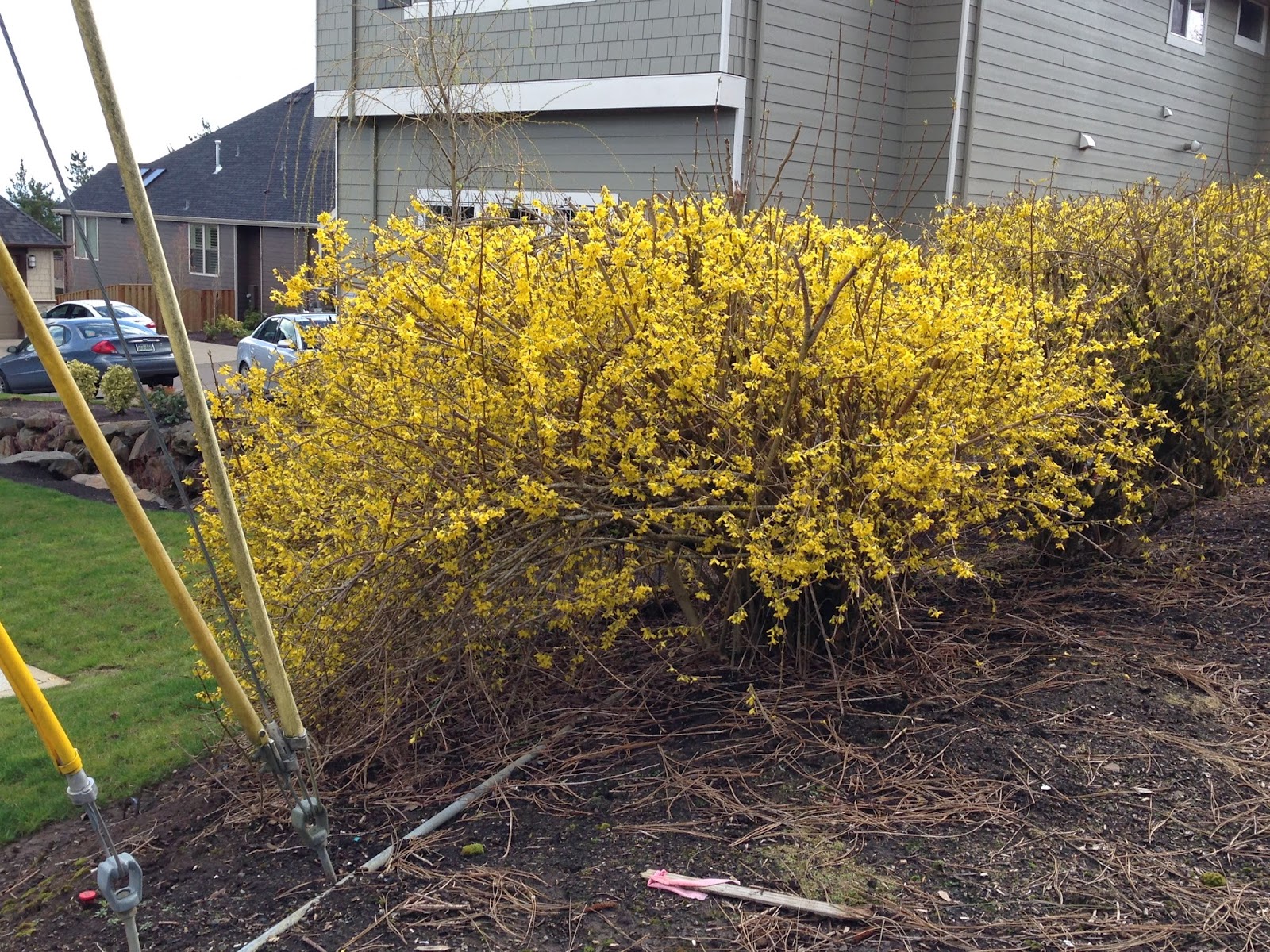
For me, forsythia is the harbinger
of spring. (That and odoriferous
ants.) Forsythia's blooms explode on the scene in March, just as the
chill of winter begins to ebb. The bright yellow blooms appear before the
leaves making it especially beautiful. These small trees/large shrubs
have multi-branch trunks that often arch gracefully. What is often
surprising to me is how huge these shrubs get. Some forsythias can get to
a width of 12'. That's just one plant! And it's a critical example
of how it is important to consider mature size when placing plants.
We have a beautiful forsythia at the
southeast corner of our home, where it gets maximum sun on our lot. The
problem is that the shrub is squeezed between the house and the fence line. A space that is only eight feet wide and is
one of the pathways that leads to the gate separating the front and back.
For the first couple of years, I tried desperately to prune it to push its
height higher, so that the arching branches would arch well over our
heads. It didn't work. So eventually, the tree/shrub will have to
be removed. Until I muster that courage, my husband gets angry at the
forsythia every summer and "prunes" it, which means there are lots of
random cuts made. *Sigh*
Be kind to yourself and your
plants. Place them in spaces where they are happy and will be able to
live out their lives.
 |
| Each is 10' wide and have been pruned. |
 The photos to the left and right are examples of how to use this shrub to maximum effect and of
judicious pruning. This is a slope where the forsythia has been allowed
to arch down to the ground on one side, the downslope,
making the forsythia seem huge and dramatic. The upslope has been pruned to make the shrub appear tidy, without
the low, arching branches. It is very aesthetically
pleasing. Kudos to the homeowner who planted and cares for these shrubs.
The photos to the left and right are examples of how to use this shrub to maximum effect and of
judicious pruning. This is a slope where the forsythia has been allowed
to arch down to the ground on one side, the downslope,
making the forsythia seem huge and dramatic. The upslope has been pruned to make the shrub appear tidy, without
the low, arching branches. It is very aesthetically
pleasing. Kudos to the homeowner who planted and cares for these shrubs.









